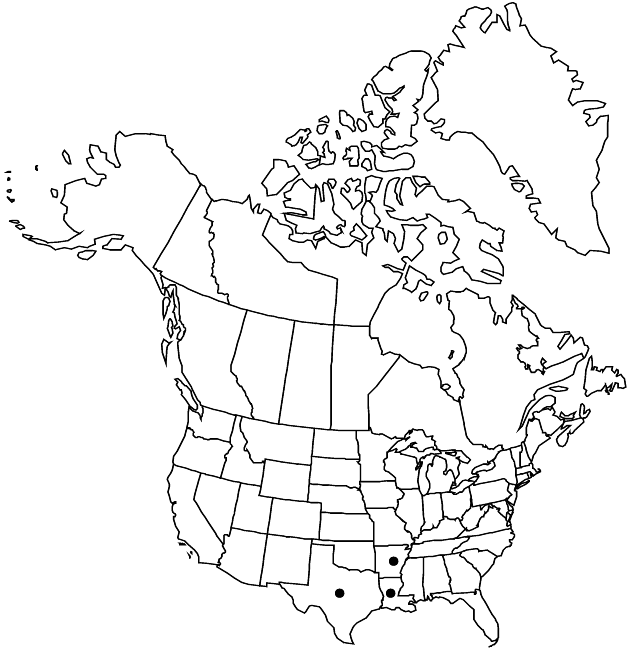Helenium drummondii
Rhodora 59: 173. 1957.
Perennials, 20–60 cm. Stems usually 1, usually unbranched distally, moderately to strongly winged, glabrous proximally, glabrous or sparsely hairy distally. Leaves glabrous; basal blades narrowly obovate to narrowly oblanceolate, usually entire, sometimes undulate-serrate; proximal and mid blades narrowly lanceolate, usually entire, sometimes undulate-serrate; distal blades lance-linear, usually entire, rarely undulate-serrate. Heads 1(–3) per plant, usually borne singly. Peduncles 10–30 cm, sparsely hairy. Involucres hemispheric to globoid, 10–18 × 15–25 mm. Phyllaries sparsely to moderately hairy. Ray florets 13–30, neuter; corollas yellow, 14–25 × 4–10 mm. Disc florets 250–650(–1000+); corollas yellow, 4.3–5.4 mm, lobes 5. Cypselae 1.2–1.5 mm, moderately hairy; pappi of 5–12 deeply lacerate, non-aristate scales 2–3.7 mm. 2n = 32.
Phenology: Flowering (Mar–)Apr(–May).
Habitat: Ditches, other moist areas such as wet woods, bogs, and swamp edges
Elevation: 10–50 m
Distribution

Ark., La., Tex.
Discussion
Selected References
None.